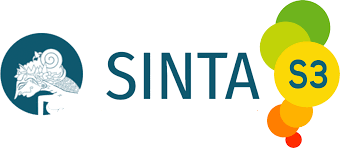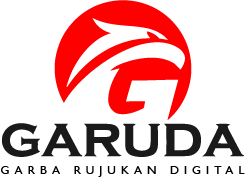Finite Element-Based Evaluation of Double-Hull Midsection Performance under Oblique Collision
Abstract
Full Text:
PDFReferences
R. A. Rahman, S. Suryanto, A. R. Prabowo, I. Yaningsih, S. Ehlers, and M. Braun, “Assessment of ship collision risk based on the recorded accident cases: Structural damage and environmental recovery,” E3S Web Conf., vol. 563, pp. 1–8, 2024. Z. Wang, Z. Hu, K. Liu, and G. Chen, “Application of a material model based on the Johnson-Cook and Gurson-Tvergaard-Needleman model in ship collision and grounding simulations,” Ocean Eng., vol. 205, no. June 2019, p. 106768, 2020. R. Raza, “Ship Collision Causes Oil Spill on Vietnam’s Long Tau River,” Marine Traffic, 28-Apr-2025. [Online]. Available: https://www.marinetraffic.com/en/maritime-news/14/accidents/2025/12041/ship-collision-causes-oil-spill-on-vietnams-long-tau-river. [Accessed: 10-Jul-2025]. J. Gross and N. Ismaeel, “Oil Tanker Collision Near Strait of Hormuz Raises Security Fears,” The New York Times, 17-Jun-2025. [Online]. Available: https://www.nytimes.com/2025/06/19/business/tanker-collision-hormuz-israel-iran.html. [Accessed: 15-Jul-2025]. K. Sheehan, B. Kathianne, A. Blair, and J. F. Gibbon, “Mexican ship crashed into Brooklyn Bridge because it lost steering during mechanical failure: sources,” New York Post, 18-May-2025. [Online]. Available: https://nypost.com/2025/05/18/us-news/mexican-ship-crashed-into-bklyn-bridge-because-it-lost-steering-during-mechanical-failure-sources/. [Accessed: 15-Jul-2025]. G. Wright, “North Sea tanker collision - what we know so far,” BBC News, 2025. [Online]. Available: https://www.bbc.com/news/articles/c62z9ee68y6o. [Accessed: 15-Jul-2025]. W. Ma, Y. Zhu, M. Grifoll, G. Liu, and P. Zheng, “Evaluation of the Effectiveness of Active and Passive Safety Measures in Preventing Ship–Bridge Collision,” Sensors 2022, Vol. 22, Page 2857, vol. 22, no. 8, p. 2857, 2022. International Maritime Organization, “International Convention for the Safety of Life at Sea (SOLAS) Chapter II-1 Construction – Structure, subdivision and stability, machinery and electrical installations.” International Maritime Organization, London, UK, 1974. K. W. Ketkar, “The Oil Pollution Act of 1990: A Decade Later,” Spill Sci. Technol. Bull., vol. 7, no. 1–2, pp. 45–52, 2002. Det Norske Veritas, “Design Against Accidental Loads,” Recomm. Pract. DNV-RP-C204, no. October, pp. 7–52, 2010. Biro Klasifikasi Indonesia, “IACS Common Structural Rules For Double Hull Oil Tankers,” Rules Classif. Constr. Part 1. Seagoing Ships, vol. XVI, 2014. H. S. Alsos and J. Amdahl, “On the resistance of tanker bottom structures during stranding,” Mar. Struct., vol. 20, no. 4, pp. 218–237, 2007. H. S. Alsos and J. Amdahl, “On the resistance to penetration of stiffened plates, Part I – Experiments,” Int. J. Impact Eng., vol. 36, no. 6, pp. 799–807, 2009. P. Hogström and J. W. Ringsberg, “An extensive study of a ship’s survivability after collision – A parameter study of material characteristics, non-linear FEA and damage stability analyses,” Mar. Struct., vol. 27, no. 1, pp. 1–28, 2012. M. Storheim and J. Amdahl, “Design of offshore structures against accidental ship collisions,” Mar. Struct., vol. 37, pp. 135–172, 2014. M. Kõrgesaar, “The effect of low stress triaxialities and deformation paths on ductile fracture simulations of large shell structures,” Mar. Struct., vol. 63, pp. 45–64, 2019. A. R. Prabowo, T. Tuswan, A. Nurcholis, and A. A. Pratama, “Structural Resistance of Simplified Side Hull Models Accounting for Stiffener Design and Loading Type,” Math. Probl. Eng., vol. 2021, no. 1, p. 6229498, 2021. V. U. Minorsky, “An analysis of ship collisions with reference to protection of nuclear power plants,” New York, 1958. A. R. Prabowo, D. M. Bae, J. H. Cho, and J. M. Sohn, “Analysis of structural crashworthiness and estimating safety limit accounting for ship collisions on strait territory,” Lat. Am. J. Solids Struct., vol. 14, no. 8, pp. 1594–1613, 2017. B. C. Cerik and J. Choung, “Fracture Estimation in Ship Collision Analysis—Strain Rate and Thermal Softening Effects,” Met. 2021, Vol. 11, Page 1402, vol. 11, no. 9, p. 1402, 2021. S. Zhang, “The Mechanics of Ship Collisions Department of Naval Architecture And Offshore Engineering,” 1999. P. T. Pedersen and S. Zhang, “Absorbed energy in ship collisions and grounding-revising Minorsky’s empirical method,” J. Sh. Res., vol. 44, no. 2, pp. 140–154, 2000. A. R. Prabowo, A. Bahatmaka, J. H. Cho, J. M. Sohn, D. M. Bae, S. Samuel, and B. Cao, “Analysis of structural crashworthiness on a non-ice class tanker during stranding accounting for the sailing routes,” in Maritime Transportation and Harvesting of Sea Resources, 2016, pp. 645–654. ANSYS, ANSYS LS-DYNA User’s Guide. Pennsylvania, US: Ansys, Inc., 2020. R. Ridwan, S. Sudarno, H. Nubli, A. Chasan, I. Istanto, and P. S. Pratama, “Numerical Analysis of Openings in Stiffeners under Impact Loading: Investigating Structural Response and Failure Behavior,” vol. 22, no. 2, p. 2023, 2023. S. Ehlers, “A procedure to optimize ship side structures for crashworthiness,” Proc. Inst. Mech. Eng. Part M J. Eng. Marit. Environ., vol. 224, no. 1, pp. 1–11, 2010. Z. Xiong, M. Ma, Y. Guo, and R. Li, “Study of energy absorption characteristics of coastal ship side structures based on collision accidents,” Ocean Eng., vol. 307, p. 118079, 2024. M. S. Akbar, A. R. Prabowo, D. D. D. P. Tjahjana, F. B. Laksono, and S. J. Baek, “Assessment of designed midship section structures subjected to the hydrostatic and hydrodynamic loads: A convergence study,” Procedia Struct. Integr., vol. 33, no. C, pp. 67–74, 2021. A. R. Prabowo, R. Ridwan, T. Tuswan, D. F. Smaradhana, B. Cao, and S. J. Baek, “Crushing resistance on the metal-based plate under impact loading: A systematic study on the indenter radius influence in grounding accident,” Appl. Eng. Sci., vol. 18, no. February, p. 100177, 2024. B. Liu, L. Zhang, and J. Deng, “Impact Response of a Double-Bottom Structure with High and Penetrated Girders and Floors,” J. Mar. Sci. Eng., vol. 12, no. 2, 2024. B. Q. Chen, B. Liu, and C. Guedes Soares, “Experimental and numerical investigation on a double hull structure subject to collision,” Ocean Eng., vol. 256, p. 111437, 2022. F. Liu, R. Li, N. Su, and G. Feng, “Experimental and numerical investigations on EH36 steel plates subjected to quasi-static penetration and repeated dynamic impact loads,” Int. J. Impact Eng., vol. 198, p. 105212, 2025. A. AbuBakar and R. S. Dow, “The impact analysis characteristics of a ship’s bow during collisions,” Eng. Fail. Anal., vol. 100, pp. 492–511, 2019. A. R. Prabowo, B. I. R. Harsritanto, D. M. Bae, J. M. Sohn, A. Bahatmaka, S. Samuel, and B. I. R. Harsritanto, “Progressive structural failure of the RoRo side hull during accidental powered-bow collisions,” in The 6th International Conference on Science & Engineering in Mathematics, Chemistry and Physics, 2018, pp. 20003-1-020003–7. A. R. Prabowo, A. Bahatmaka, and J. M. Sohn, “Crashworthiness characteristic of longitudinal deck structures against identified accidental action in marine environment: a study case of ship-bow collision,” J. Brazilian Soc. Mech. Sci. Eng., vol. 42, no. 3, p. 584, 2020. D. Hambissa, R. B. Nallamothu, and T. Andarge, “Analysis of Three-Wheeler Vehicle Structure at the Event of Side Pole Crash,” J. Eng., vol. 2022, no. 1, p. 5490585, 2022. H. Liu, K. Liu, X. Wang, Z. Gao, and J. Wang, “On the Resistance of Cruciform Structures during Ship Collision and Grounding,” J. Mar. Sci. Eng. 2023, Vol. 11, Page 459, vol. 11, no. 2, p. 459, 2023. Z. Wang, K. Liu, G. Chen, and Z. Hu, “An analytical method to assess the structural responses of ship side structures by raked bow under oblique collision scenarios,” Proc. Inst. Mech. Eng. Part M J. Eng. Marit. Environ., vol. 235, no. 3, pp. 773–791, 2021. I. M. Suci, G. Sitepu, M. Zubair, and M. Alie, “Longitudinal Strength Analysis Considering the Cargo Load on Very Large Crude Carrier (VLCC),” Kapal J. Ilmu Pengetah. dan Teknol. Kelaut., vol. 18, no. 3, pp. 171–177, 2021. D. Rosato and D. Rosato, Plastics Engineered Product Design. Elsevier, 2003. A. I. Wulandari, R. J. Ikhwani, S. Suardi, R. S. Yani, A. N. Himaya, and Alamsyah, “Collision Analysis Of A Self Propelled Oil Barge (SPOB) Using Finite Element Method,” Kapal J. Ilmu Pengetah. dan Teknol. Kelaut., vol. 19, no. 2, pp. 101–111, 2022.
Refbacks
- There are currently no refbacks.








